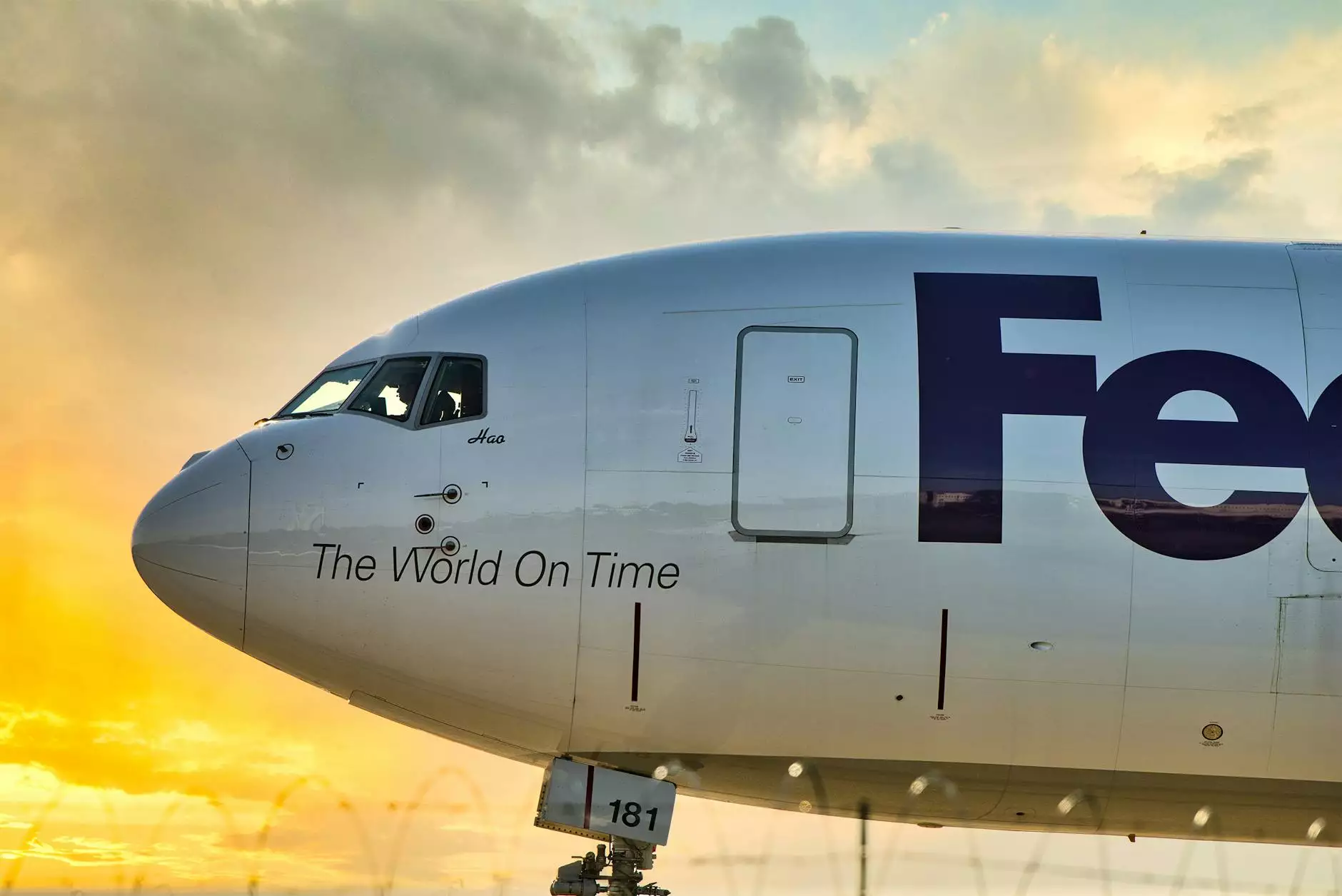Understanding Air Freight Quotations for Your Business Needs

In the world of global trade and commerce, air freight plays a crucial role in ensuring the timely delivery of goods. With the growing demand for fast shipping solutions, understanding air freight quotations has become essential for businesses looking to optimize their logistics and reduce costs. This comprehensive guide will delve into the intricacies of air freight quotations, highlighting key factors that influence costs, the process of obtaining quotes, and effective strategies for businesses.
What is Air Freight?
Air freight refers to the transportation of goods via air carriers. It is one of the fastest shipping methods available and is particularly beneficial for businesses that need to deliver products quickly. Unlike ocean freight, which can take weeks, air freight can transport goods across long distances in a matter of hours. This speed makes it ideal for a variety of industries, from pharmaceuticals to fashion.
Why is Understanding Air Freight Quotations Important?
Obtaining an accurate air freight quotation is crucial for businesses as it helps in budgeting and planning logistics effectively. Without a proper understanding, companies may face unexpected costs, which can significantly impact profits. Here are some reasons why understanding air freight quotations is vital:
- Budgeting: Accurate quotes help in financial planning.
- Cost Management: Businesses can identify and minimize hidden fees.
- Competitive Advantage: Understanding quotes allows businesses to negotiate better rates.
- Operational Efficiency: Efficient logistics planning reduces delays and increases customer satisfaction.
Factors Influencing Air Freight Quotations
Several factors determine the cost of air freight services. Understanding these elements can help businesses obtain the most advantageous quotations. Below are the primary factors that influence air freight rates:
1. Weight and Dimensions of Cargo
The most significant element affecting air freight costs is the weight and dimensions of the cargo. Air freight charges are typically based on the greater of the actual weight or volumetric weight (dimensional weight). This means that businesses should ensure proper packaging to avoid unnecessary costs. Formula for Volumetric Weight: Length (cm) x Width (cm) x Height (cm) / 5000.
2. Destination and Origin
The distance between the origin and destination plays a crucial role in determining the freight quote. Shipping from a major international airport to another hub generally costs less than sending cargo to remote locations. Airports with greater traffic usually offer more competitive rates due to higher volumes.
3. Nature of the Goods
Hazardous materials, perishables, and high-value items often incur higher shipping fees due to special handling requirements. When requesting an air freight quotation, businesses should declare the nature of the goods to obtain a precise rate.
4. Urgency of Shipping
When goods need to be delivered quickly, expedited services are available at a premium rate. Companies should weigh the need for speed against costs to choose the best option for their logistics strategy.
5. Fuel Prices
Fuel costs significantly affect air freight rates. As fuel prices fluctuate, so do the shipping costs. Airlines often adjust rates to reflect changes in fuel costs, adding a fuel surcharge to the base rate, which can impact the final quotation.
6. Seasonal Demand
During peak seasons, such as the holiday shipping period, air freight rates may increase due to high demand. Businesses should consider these trends when planning shipments and obtaining quotes.
How to Obtain an Accurate Air Freight Quotation
Obtaining an accurate air freight quotation is a systematic process that involves several steps. Here’s how businesses can ensure they get the best quote:
1. Gather Information
Compile all relevant information about the shipment, including:
- Weight and dimensions of the cargo
- Type of goods
- Origin and destination addresses
- Required delivery dates
2. Choose Reliable Freight Forwarders
Partner with freight forwarders who have a reputation for transparency and reliability. They are responsible for managing and coordinating the shipment process and can help you navigate complexities.
3. Request Multiple Quotes
Don’t settle for the first quote. Request quotations from multiple air freight providers to compare costs and services.
4. Understand the Breakdown of Costs
When receiving an air freight quotation, ensure it includes a detailed breakdown of all associated costs:
- Base rates for transportation
- Fuel surcharges
- Customs duties and taxes
- Insurance costs
- Handling fees
5. Negotiate Terms
Negotiation is a crucial aspect of obtaining favorable quotations. Discuss terms such as payment, handling, and delivery timelines with your chosen freight provider.
Tips for Reducing Air Freight Costs
While air freight is generally more expensive than other shipping options, there are strategies businesses can employ to minimize costs:
1. Optimize Packaging
Reducing the dimensions and weight of packages can significantly cut shipping costs. Use lightweight materials and minimize excess packaging.
2. Consolidate Shipments
Instead of shipping multiple small packages, consolidate shipments to take advantage of bulk rates. This can lower the overall shipping costs significantly.
3. Use Door-to-Door Services
Door-to-door services eliminate additional handling and potential delays associated with multiple handlers, which can also help in reducing the overall cost.
4. Plan Ahead
Whenever possible, plan shipments in advance rather than opting for expedited services, which can be significantly costlier.
The Future of Air Freight Logistics
The air freight industry is evolving rapidly, influenced by technology, customer expectations, and sustainability norms. Here are some trends likely to shape the future:
1. Technological Integration
The use of technology in logistics is enhancing efficiency. Track and trace systems, automated quotes, and real-time monitoring are becoming standard practices.
2. Eco-Friendly Initiatives
Airlines are increasingly focusing on sustainability, integrating eco-friendly practices into their operations. Businesses should consider environmentally responsible freight options as part of their logistics strategy.
3. E-Commerce Growth
The rise of e-commerce is expected to result in a significant increase in air freight demand. Retailers need to adapt their logistics solutions to meet consumer expectations for fast delivery.
Conclusion
Understanding the ins and outs of air freight quotations is essential for businesses that rely on efficient logistics to thrive in the competitive marketplace. By being informed about the factors influencing quotes, the process of obtaining them, and effective cost-reduction strategies, companies can optimize their shipping operations, enhance customer satisfaction, and improve their bottom line.
Leveraging the expertise of professional shipping centers, transportation services, and airports can further streamline the logistics process, making air freight a strategic advantage in your business model. Remember to keep abreast of industry trends and continuously evaluate your logistics solutions to stay ahead of the competition.


